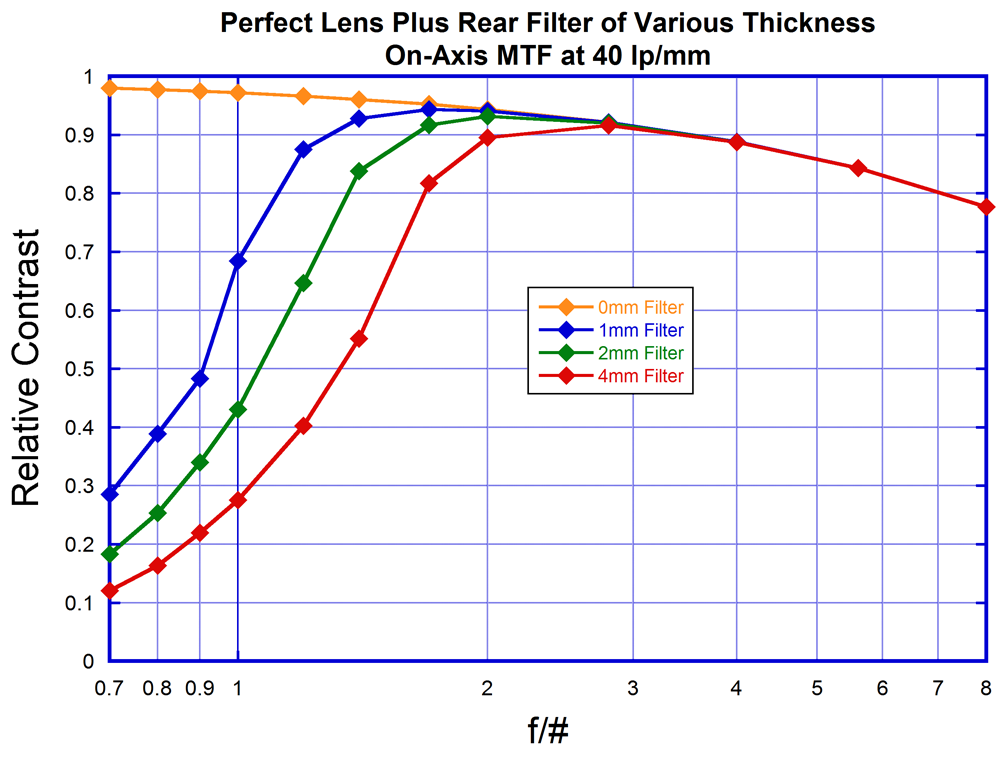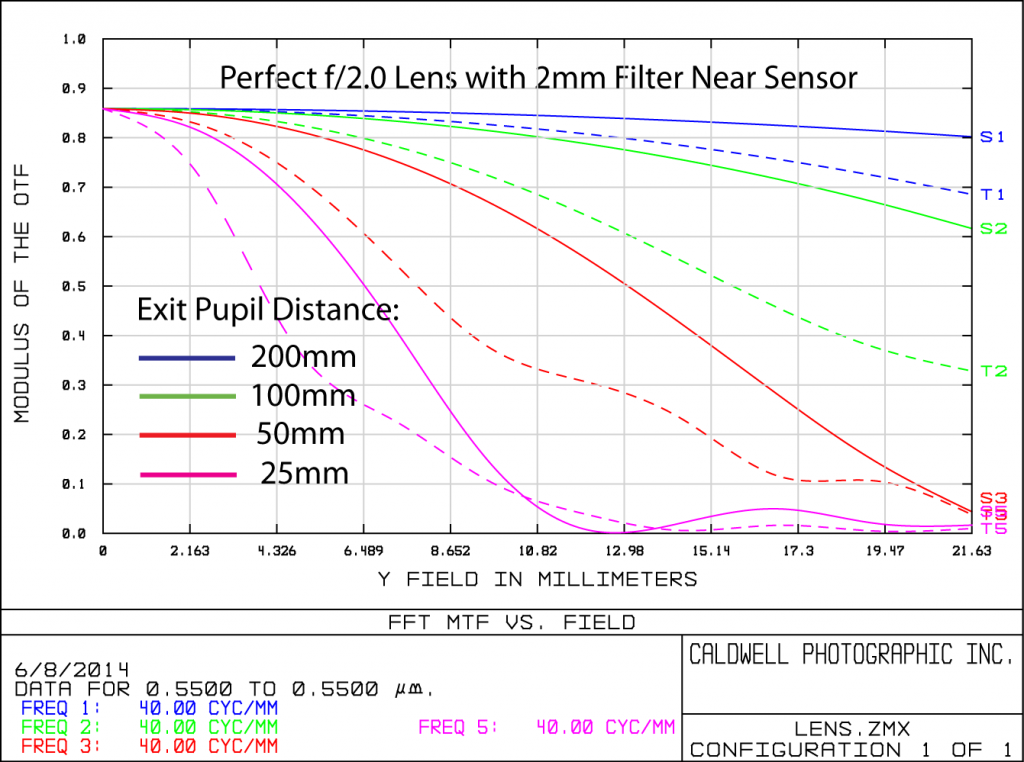Other
Sensor Stack Thickness Part III: The Summary
Well, I have to admit this has been a fun series. I’ve learned a whole lot. That’s what makes this so fun — I get some results I don’t understand, get some help figuring out what is going on, and before I know it, I’ve learned something that explains other things I haven’t been able to understand.
In the second part of this series, we started a database of sensor stack thickness and exit pupil distances, hoping that it would help people decide which lenses would adapt best to which cameras. (And, of course, determine which lenses would not adapt well to which cameras.) A number of people have added information to the database since it was first posted — enough to make it pretty useful.
Since the database is now large enough to be useful, I thought it would be a good idea to make a summary of what we know about lenses and sensor stacks. The best thing about all this, for me at least, is that it lets us make some generalizations about which lenses would be expected to have problems on which cameras.
General Rules
To summarize, there are three main factors that determine if a given lens will have problems when used on a different camera than it was designed for:
- Aperture (wider aperture has more problems)
- Exit pupil distance (shorter exit pupil distance has more problems)
- Difference between sensor stack thickness the lens is designed for, and the sensor stack thickness of the camera it’s being used on.
As always, Brian Caldwell has been kind enough to furnish graphs of the theory, which really helps in visualizing things.
Aperture and Stack Difference On-Axis
Brian’s first graph demonstrates two important points.

Graph courtesy Brian Caldwell
The graph demonstrates the on-axis (center) MTF of a theoretically perfect lens designed for no sensor stack filter (orange line), and the effects of adding a sensor stack equivalent to 1,2, and 4mm of glass. The first takeaway message is that for apertures of about f/2.8 and smaller (higher f number) there is really no significant effect on-axis. (Emphasis on the ‘on-axis’ part. This doesn’t mean the corners will be great, although they may be.)
The second takeaway message is that the effect is proportional to the difference between the sensor stack thickness the lens was designed for and actual thickness of the camera it’s being used on. For example, adding 1mm of extra glass in the path doesn’t really affect things until f/1.4 or so, while a 4mm difference is quite apparent at f/1.8. Once the effect begins, though, MTF decreases exponentially with increasing aperture.
The summary, for on-axis effects, is that shooting a lens at f/1.4 on a camera with a sensor stack different by 2mm or more from what the lens was designed for will probably reduce MTF even in the center. Stopped down, though, you’re unlikely to see any difference on-axis.
Exit Pupil Distance from Sensor
Brian’s second graph shows the effect of a 2mm sensor stack on an f/2.0 lens designed for no sensor stack. If you go back to the graph above, you’ll see that at f/2.0 a 2mm sensor stack difference has really no effect on-axis. This graph shows the off-axis effects out to the edge of the sensor.

Graph courtesy Brian Caldwell
As you can see, the off-axis effect shows a mild decrease in MTF and increased astigmatism even with a 100mm exit pupil distance. Would you see this in real-world photography? You might, if you compared an image taken with the adapted system to an image taken with the lens native camera system. But overall, you’d probably be pretty happy with the lens adapted to a different camera.
With a 25mm exit pupil distance, the effects are very severe, even just a short distance from the center. An exit pupil distance of 50mm definitely has some effect, too, although as expected it’s not as bad as 25mm.
Some Generalizations
Sensor Stack Thickness
Our database for sensor-stack thickness remains incomplete (although I’m hoping for more contributions soon). Also remember that physical measurement of thickness and optical thickness may be different. If the glass used has a high index of refraction, it would have an optical effect greater than what is measured physically. For example, we might measure a physical thickness of 2mm on two different cameras, but if one has low-refractile glass and the other high-refractile glass, the optical measurement made might be 2mm and 2.5mm.
The bottom line is all of the sensor stack thickness measurements we have are guesstimates, probably accurate to 0.5mm or perhaps 0.25mm. However, since a difference of 1mm should have only a minimal effect that’s probably accurate enough.
Our optical bench measurements with f/1.4 lenses seem to support this. When we measure lenses with a difference of 1mm of optical glass in the path we see almost no change on-axis and usually just a mild astigmatism change off-axis. A 2mm difference usually causes significant problems, though.
The summary regarding sensor stacks seems pretty clear. Leica cameras (with possible exception of the M240) have less than a 1mm stack. Most SLRs are around 2mm. Micro 4/3 cameras, with the exception of the Black Magic cameras, are about 4mm.
We should expect the following to give problems:
1. Using a lens designed for film on an SLR would give a 1.5 to 2.5mm stack difference, and we should notice a performance drop-off when using wide-aperture lenses with shorter exit pupil distances.
2. Using a lens designed for an SLR on a micro 4/3 camera would give a 2mm stack difference, and we may notice a performance drop-off on wide-aperture lenses with shorter exit pupil distances.
3. Using a lens designed for film on a micro 4/3 camera would give a 4mm difference, and if the other factors (exit pupil distance and wide aperture) are present we will almost certainly notice a performance drop-off.
On the other hand, using a Nikon lens on a Canon camera, or either of those on an NEX or Fuji camera shouldn’t give major problems since all of those sensor stacks are similar.
This should answer one question that several people have asked: Do third-party lens makers have to alter a lens optically when making a Canon versus a Nikon mount? I wouldn’t think so; the sensor stack thickness is very similar. It may (I’m just guessing) also answer an unasked question: Did Zeiss decide to make Tuitt lenses for Sony and Fuji, but not m4/3 because of the sensor stack difference? I don’t know the answer, but Sigma makes the same mirrorless lenses for both m4/3 and NEX. There may be compensating optics in those, but also none have wider aperture than f/2.8, which might minimize the optical difference.
Rangefinder Wide-angle Lenses
As the graph above shows, lenses with an exit pupil distances of less than 50mm are significantly affected by a sensor stack difference. Those with exit pupil distances of less than 25mm are greatly affected. Glancing at the database, it’s obvious that most SLR lenses have an exit pupil distance of 50mm or more. Many rangefinder lenses are less than 50mm and some (especially wide-angles) are around 25mm.
The lens database has gotten fairly large, so I’ve changed it to be sortable, which should help you find what you’re looking for. A couple of lenses do stand out that, according to theory at least, should make bad adapter candidates (at least when shot wide open).
The Voigtlander 15mm f/4.5 Heliar M mount, Zeiss ZM 15mm f/2.8 Distagon, Zeiss ZM 21mm f/2.8 Biogon, Leica-M 28mm f/2.8 ASPH Elmarit, and Zeiss ZM 35mm f/2.8 Biogon all have exit pupil distances of less than 30mm.
A number of other rangefinder lenses have exit pupil distances of less than 50mm, but particularly notable are the Voigtlander 35mm f/1.2 and 50mm f/1.5, both of which have wide apertures in addition to short exit pupil distances. Obviously, stopping these lenses down will help minimize the effects of sensor stack if you just have to shoot them on an m4/3s camera.
SLR Lenses
Most SLR lenses have exit pupil distances of 50mm to 100mm. One thing that might be lost in the table is that the Sigma 18-35mm f/1.8 Art lens has a nice, long exit pupil distance, especially at the side end where it’s 150mm. This should make it a superb lens to use on cameras with different sensor stack thickness. Other ‘long exit pupil distance’ lenses include the Nikon 35mm f/1.8 DX (136mm), Nikon 24-70 f/2.8 AF-S G (116mm at 24mm), and Tokina 11-16 f/2.8 (100-117mm depending on zoom distance), and Canon 50mm f/1.2 L (103mm). The Canon 17mm f/4 TS-E (91mm) and 24mm f/3.5 TS-E (86mm) also have fairly long exit pupil distances. All of these should give good performance even out to the edges (assuming a good adapter, of course).
Summary
While I don’t have a mathematical formula to predict how well a given lens will work on a given camera, it should be apparent that wide-angle rangefinder lenses designed for film are going to struggle, especially on m4/3 cameras, but to some degree on other cameras. Longer focal length rangefinder lenses tend to have longer exit pupil distances and should do better. Stopping down to f/4 or f/8 should reduce the problem significantly, although it isn’t guaranteed to eliminate it near the edges of the frame.
SLR lenses may also have some troubles on m4/3 cameras, since there’s nearly a 2mm difference in stack thickness. They shouldn’t have as much of a problem as rangefinder lenses, though, since they are designed for a 2mm sensor stack and they tend to have longer exit pupil distances. Older lenses designed for film cameras will tend to have more issues, of course, since they were designed for no sensor stack.
Obviously, these are generalizations and suggestions. There are going to be exceptions. But, if nothing else, hopefully we can help a few people stop trying one adapter after another, hoping to make their 15mm rangefinder lens look great on the m4/3 camera.
Roger Cicala and Brian Caldwell
Lensrentals.com
July, 2014
Author: Roger Cicala
I’m Roger and I am the founder of Lensrentals.com. Hailed as one of the optic nerds here, I enjoy shooting collimated light through 30X microscope objectives in my spare time. When I do take real pictures I like using something different: a Medium format, or Pentax K1, or a Sony RX1R.
-
Joachim Wesner
-
Joachim Wesner
-
Bill
-
Bill
-
Eric
-
Eric
-
Sam long
-
Andrew
